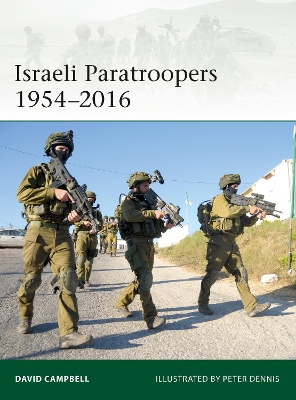Elite
1 primary work • 2 total works
Book 224
From the creation of the first volunteer paratroop unit shortly after the birth of Israel and of the Israeli Defense Force, this arm of service has been recognized as elite. They have also been the first choice for daring special missions, and it is mainly from their ranks that Israel's Special Forces units have been recruited. A unique aspect of the Israeli military is the cross-posting of officers from the airborne, armoured and other units, to ensure that all unit commanders share their aggressive qualities and thorough understanding of the capabilities of all arms. In this way the influence of the paratroop arm has been out of proportion to its size.
This fully illustrated study is a complete history of Israeli paratroopers from its creation to the present day, including relevant developments in their role and organization, as well as their achievements and setbacks in conflicts such as the Six Days War and Yom Kippur War.
This fully illustrated study is a complete history of Israeli paratroopers from its creation to the present day, including relevant developments in their role and organization, as well as their achievements and setbacks in conflicts such as the Six Days War and Yom Kippur War.
Driven by the Iranian Revolution of 1979 and the insecurities it provoked in Saddam Hussein’s Iraqi dictatorship, the Iran–Iraq War would become the largest conventional conflict of the period. Curiously little-known considering its scale and longevity, the struggle between Iran and Iraq was primarily fought along the 1,458km border in a series of battles which, despite both sides being armed with modern small arms, armour and aircraft, often degenerated into attritional struggles reminiscent of World War I. Such a comparison was underlined by frequent periods of deadlock, the extensive use of trenches by both sides, and the deployment of chemical weapons by Iraq. Fully illustrated with specially commissioned artwork, this study investigates the organization, appearance and equipment of the ground forces of both sides in the Iran–Iraq War, including Iraq’s Republican Guards and Iran’s Pasdaran or Islamic Revolutionary Guard Corps. The war resulted in stalemate with some half a million dead and at least as many wounded. The financial costs incurred in waging such a long and debilitating war were one of the spurs that led Saddam Hussein to invade Kuwait barely two years later, setting in motion one of the defining currents of recent Middle-Eastern history.

